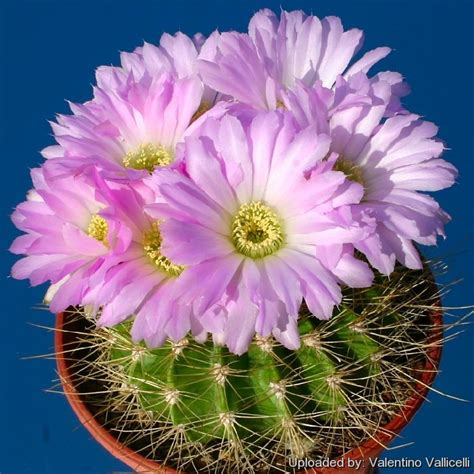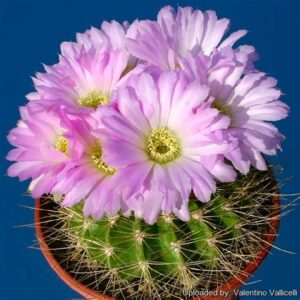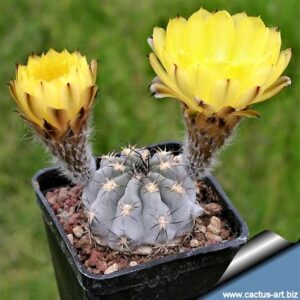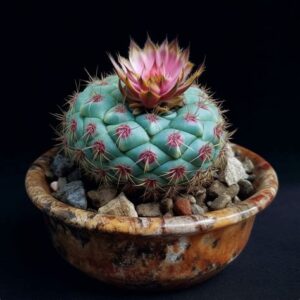In the diverse world of cacti, the Acanthocalycium spiniflorum f. violaceum stands out not just for its captivating beauty, but also for the intriguing challenges it poses to enthusiasts and horticulturists alike. Have you ever found yourself drawn to a plant that seems both inviting and daunting? The Acanthocalycium genus offers just such a paradox. This article takes a comprehensive journey through the fascinating characteristics, distinct cultivation needs, and unique features of this splendid cactus variety.
Understanding the Acanthocalycium Genus
The Acanthocalycium genus is a prominent group within the Cactaceae family, known for its spherical or cylindrical stems adorned with ample spines. The term “Acanthocalycium” translates roughly to “thorned calyx,” aptly describing the thorny structures that surround its flowers. This cactus is native to arid regions in South America, particularly Argentina, where it thrives in environments that can range dramatically in temperature and humidity.
Acanthocalycium spiniflorum f. violaceum, in particular, boasts a stunning appearance with its deep violet hues and formidable spines. The vibrant flowers that emerge from its apex are a reward for those who cultivate it, often showcasing shades that can be described as both delicate and robust. Yet, with extraordinary beauty comes a set of specific care requirements.
The Enticing Allure of Its Appearance
The aesthetic appeal of Acanthocalycium spiniflorum f. violaceum is not to be underestimated. Its spherical form can reach diameters of up to 12 centimeters, making it an eye-catching addition to any succulent collection. The spines, which can be long and twisting or short and bristly, create a striking contrast against the vibrant skin of the cactus. This variety features an array of colors, with its primary shade being a rich violet. But, under optimal sunlight, these cacti can display a gradient of colors, further enhancing their appeal.
Flowers produced by this cactus are equally captivating. When spring arrives, clusters of trumpet-shaped flowers unfurl, exhibiting bright yellow and orange stamen that create a stunning visual juxtaposition against the improbably dark epidermis. The blooming phase lasts for several weeks, serving as an enchanting display for both the owner and any onlookers.
Cultivation Conditions and Challenges
Cultivating Acanthocalycium spiniflorum f. violaceum offers a rewarding yet challenging proposition for plant lovers. Proper care is paramount for this species, which requires keen attention to several key factors to thrive.
Sunlight is critical for the cactus’ health. Ensuring it receives adequate direct sunlight for at least six hours a day will promote optimal growth and blooming. However, a gentle balance is necessary, as too much intense sunlight can scorch the plant, leading to discoloration and damage.
Equally important is the soil in which it thrives. A well-draining cactus mix is essential to prevent water retention that can lead to root rot. The use of perlite or coarse sand can enhance drainage within the soil, thus mimicking the arid terrains from which it originates. Consider the texture of your chosen substrate carefully; it should be both gritty and light.
Watering must be approached with caution. Over-watering is perhaps the most common challenge faced by those nurturing Acanthocalycium spiniflorum f. violaceum. During the growing season, a deep soak followed by a thorough drying period is ideal. Conversely, during the dormant winter months, watering should be significantly reduced to mimic natural seasonal changes.
Temperature also plays a crucial role, as these cacti prefer a warm environment. Ideally, temperatures should range between 18°C to 30°C (65°F to 86°F) during the growing season. When the dormant season arrives, they can tolerate cooler temperatures around 10°C (50°F) but should be protected from frost.
Potential Pest Problems
Despite its sturdy exterior, Acanthocalycium spiniflorum f. violaceum can fall prey to certain pests. Mealybugs and spider mites are the primary culprits. Regular inspections and preventive measures, such as the use of neem oil or insecticidal soap, can mitigate these threats. Cultivators must adopt a proactive stance against these invaders to maintain the integrity of the plant.
The Role of Pollination and Seed Production
For those looking to propagate this variety, understanding its floral structure and pollination process is vital. While Acanthocalycium spiniflorum f. violaceum can self-pollinate, cross-pollination with other Acanthocalycium species can produce seeds with genetic diversity that may thrive better in varied environmental conditions.
You might wonder: how can one successfully pollinate these exquisite flowers? One effective method involves using a small artist’s brush to transfer pollen from one bloom to another, ensuring that the reproductive processes are optimized for seed production. This engagement not only enhances genetic variability but also fosters a sense of accomplishment in the cultivation journey.
Conclusion: The Challenge of Mastery
In summary, Acanthocalycium spiniflorum f. violaceum serves as both a decorative asset and a cultivation challenge. The balance between providing sufficient light and moisture, alongside regular pest management, requires a dedicated approach. This species invites succulent enthusiasts to not only appreciate its aesthetic qualities but also engage scientifically with its needs.
As you embark on your journey with this stunning cactus, ponder: are you prepared to meet the cultivation challenges head-on, and will your efforts be rewarded with a flourishing specimen? With the right knowledge, patience, and dedication, the path to cultivation mastery is within reach, offering both a beautiful plant and an enriching horticultural experience.





Leave a Comment